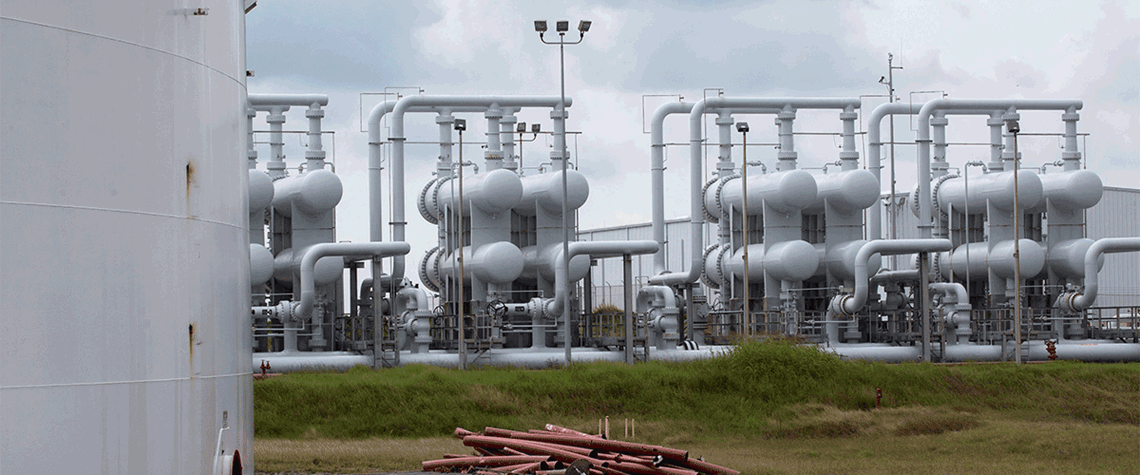The war in Ukraine has redefined oil trade routes, compounded margin requirements at commodity exchanges, curtailed trading position limits and replaced risk-averse traders with new market entrants in the trafficking of Russian barrels.
Another anticipated consequence of the war—drawdowns of government-held oil stockpiles— merits closer investigation because of continuing geopolitical risks to oil supplies in a world of limited spare capacity and oil demand that will remain far more resilient than conventional wisdom holds.
In the wake of the 1973–74 Arab oil embargo, which quadrupled oil prices, consuming nations established government-managed strategic reserves and set up the IEA, in part to coordinate multilateral releases of oil stockpiles (i.e., ‘collective action’) in the event of future supply disruptions.
IEA rules require each member state to hold reserve volumes equivalent to at least 90 days of its net oil imports. For collective action (emergency drawdown), each member country’s contribution is proportionate to its share of total oil consumption among IEA states.
Arguably the most influential government-held inventory for oil markets among the IEA member nations is the US Strategic Petroleum Reserve (SPR). With authorised capacity of 714mn bl, the SPR has been the largest contributor to five collective actions. The stockpile releases happened during the 1991 Gulf War, after hurricanes damaged Gulf of Mexico assets in 2005, during the 2011 Libyan civil war, and in response to the Ukraine war in March 2022 and again in April of last year.
Largest ever
The 2022 emergency SPR drawdown of 180mn bl was its largest ever, undertaken from a starting reserve level of about 600mn bl. This was preceded in November 2021 by a 50 mn bl SPR sale, achieved through a combination of “exchange” barrels to be repaid later to the SPR and some Congressionally mandated sales.
The Biden administration has wisely pledged to begin refilling the SPR at a purchase price advantageous to US taxpayers; officials have cited a $67–72/bl target buying range. Likewise, a Congressional initiative adopted by the 2023 omnibus budget to cancel 140mn bl of previously mandated SPR sales works to avoid further depletion of the reserve.
Taken together, these policies demonstrate that leaders on both sides of Washington’s political divide recognise the need for a potent SPR. But how many barrels are needed to fulfil the reserve’s modern-day mission?
When the SPR was conceived, the US was a significant net oil importer. Net oil imports were nearly 6mn bl/d in 1974, a significant portion of which came from Middle Eastern suppliers deemed to be of questionable reliability following the 1973–74 embargo crisis.
Today, the situation is radically different. The US is now a net oil exporter, transformed by the shale oil revolution that catapulted the country past Saudi Arabia and Russia to become the world’s largest oil producer. The lifting of its oil export ban in 2015 has enabled the US to supply its crude the world over, from customers in Europe to as far afield as China.
Likewise, the US is a major exporter of refined products to Latin America, Europe and parts of Asia. And while still reliant on imports of “heavy” crude oils, the US’ largest foreign supplier of crude (by far) is its friendly northern neighbour, Canada. The “threat matrix” facing the US economy because of an oil import disruption has thus been blunted.
Nevertheless, the advantages of maintaining an adequate strategic oil reserve are compelling. While the US is far less dependent on oil imports than in decades past, the interconnected global oil market means that supply disruptions anywhere affect prices everywhere. Consultancy Rapidan Energy Group estimates that c.5mn bl/d of global oil supply is at risk of disruption in countries including Nigeria, Libya, Iraq, Kazakhstan and Russia. Measured against actual and potential global supply outages instead of imports, the need for ample inventories is substantial.
Meanwhile, Opec’s spare production capacity is thin, at c.3mn bl/d, below historic average levels. Spare capacity may temporarily increase if “voluntary” supply cuts announced in early April by eight Opec+ member states plus Russia are implemented as advertised. But spare capacity is liable to run out later this decade as global oil demand growth significantly exceeds consensus expectations. And if spare capacity is unavailable to offset supply disruptions, the ability to tap strategic reserves to prevent soaring prices and economic recession holds the same—paramount—importance as in earlier decades.
The Biden administration was criticised for failing to refill reserve in early 2023 as oil prices receded from 2022’s triple-digit territory. But a major refill was not possible for a variety of reasons. First, each of the four SPR facilities can flow oil only one direction at a time—in or out—and two of the four (Big Hill and West Hackberry) are committed through June to delivering 26mn bl that has been sold to six oil companies in what will be the last Congressionally mandated sale until 2027. Those two facilities cannot begin refilling until these outflows are completed.
Maintenance
A third site, Bayou Choctaw, is undergoing “life extension” maintenance operations and is unavailable for refill or draws except in emergencies and the return of some barrels previously offered under “exchange” agreements.
The DoE would prefer to refill caverns within the four-facility system that are in greatest need of replenishing, and those may or may not be at Bryan Mound, the only SPR facility able to receive inflows from opportunistic buybacks of the emergency-released barrels.
Because the omnibus budget agreement recognises 140mn bl of last year’s emergency sale as early fulfilment of previously mandated sales, the Biden administration now intends to add 40 mn bl back to the reserve beginning later this year, assuming the price is right. The number could be a bit higher given limited spending authority for additional purchases. Rapidan estimates the SPR will hold c.360–420 mn bl by end-2023—materially less than the 600mn bl volume prior to the spring 2020 emergency drawdown, not to mention the 650mn bl level before the November 2021 sale.
Future US administrations of all stripes should consider the following ‘dos and do nots’ regarding SPR management:
First, do not use the SPR to intervene in oil markets, other than justified emergency drawdowns to offset major disruptions. Producing nations and commodity traders, both of which may seek to undermine tactical SPR moves, possess greater resources and market agility than US policymakers steering the SPR can hope to match.
Second, adhere to IEA’s original construct, in which the collective response system is “not a tool for price intervention or long-term supply management”, but instead designed “to mitigate the negative economic effects of a sudden oil supply crisis by providing additional oil to the global market on a short-term basis”.
Third, do not expect that a promise to refill at a target range will induce domestic drillers to ramp up oil production. Instead of production growth, investors in the US oil patch now reward E&P operators that return earnings to shareholders through greater dividends and share buybacks. No government purchase tender will alter these new rules of engagement that shape capex spending budgets and drilling plans.
Clay Seigle is the director of Rapidan Energy Group’s global oil service. This article reflects his opinions.









Comments